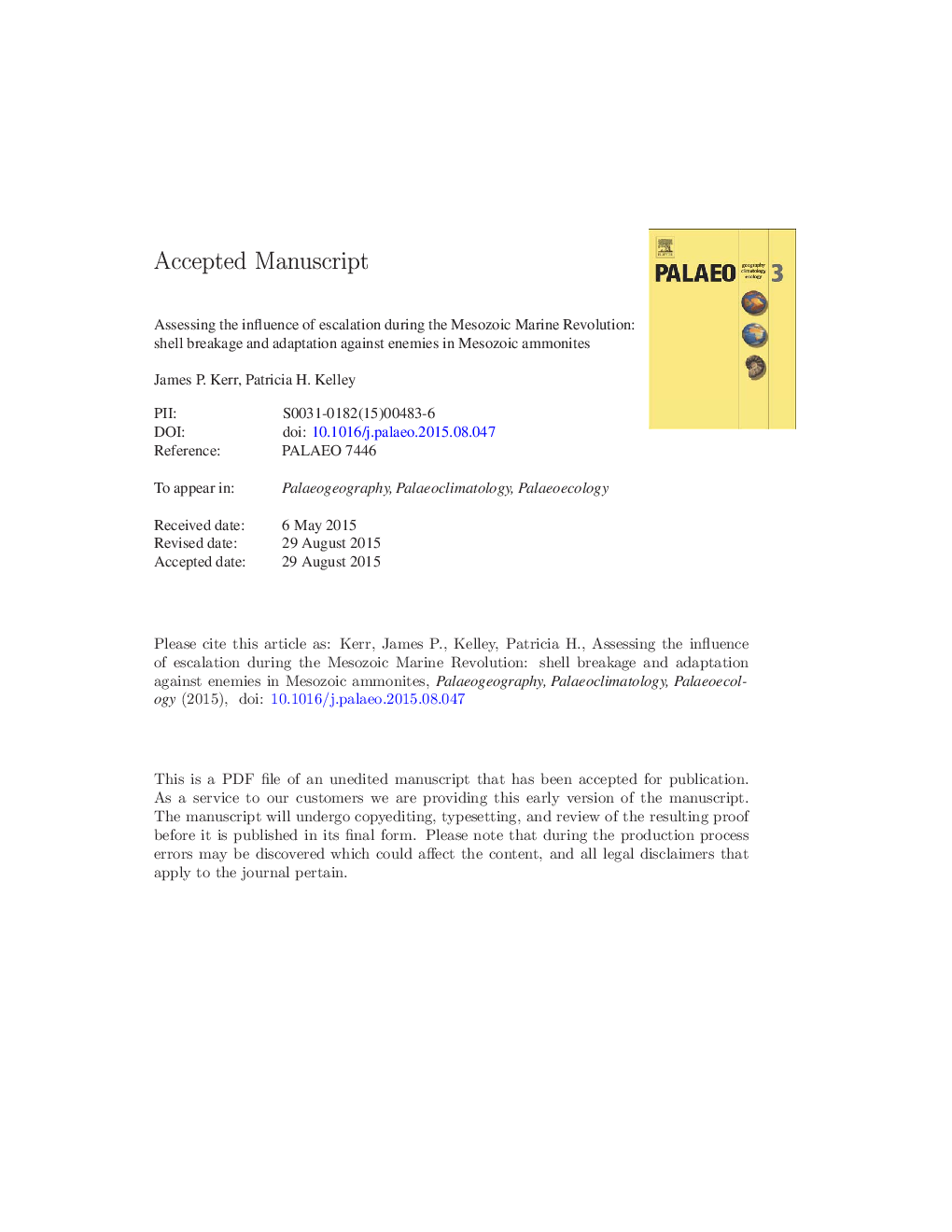| Article ID | Journal | Published Year | Pages | File Type |
|---|---|---|---|---|
| 6349565 | Palaeogeography, Palaeoclimatology, Palaeoecology | 2015 | 63 Pages |
Abstract
Escalation is evolution driven by interactions between individuals and their enemies. We examined escalation in ammonites using repair scars, which are indicative of sub-lethal predation. Because ornamentation is considered an antipredatory adaptation, we tested several hypotheses concerning the relationship between ornamentation and repair scars. We also investigated the possibility of complex sutures as a defensive trait. Ornamentation, suture complexity, and repair scar frequency (RF) data were collected from 26 Jurassic and Cretaceous ammonite genera from North America and Europe. Ornamentation was gauged as a ratio of rib thickness to shell diameter. RF was measured as percent individuals with scars and as average number of scars per individual. Suture complexity factor (CF) was calculated as a weighted count of suture features. Data on 1180 specimens revealed a significant inverse correlation between RF and shell ornament, contrary to our hypothesis that more highly ornamented shells will exhibit more repairs due to increased survivorship of attacks. Taxa exhibiting ornate ornamentation had fewer repair scars than expected, and taxa with ribs and nodes but no keel had more repair scars than expected. Repair frequencies of shells with different ornament types were found to differ between North American and European shells. No other geographic variation was found. Taxa with tightly spaced ribs were found to exhibit more repair scars. Rib size had no significant correlation with longitudinal scar size, disconfirming our hypothesis that scars on taxa with larger ribs were less able to propagate. Scars were concentrated on the first 90° of the shell, suggesting attacks at the aperture, and no right-left-medial selectivity of predatory attacks was found. Although some workers have suggested an antipredatory role for complex sutures, no relationship was found between CF and RF. Body size had a significant effect on repair scar occurrence in all but one of the taxa tested. Repair scar frequency and degree of ornamentation increased through the Jurassic and Cretaceous Periods. The data presented here support the traditionally held hypothesis that repair scars on ammonite shells represent interactions between ammonites and their enemies.
Related Topics
Physical Sciences and Engineering
Earth and Planetary Sciences
Earth-Surface Processes
Authors
James P. Kerr, Patricia H. Kelley,
